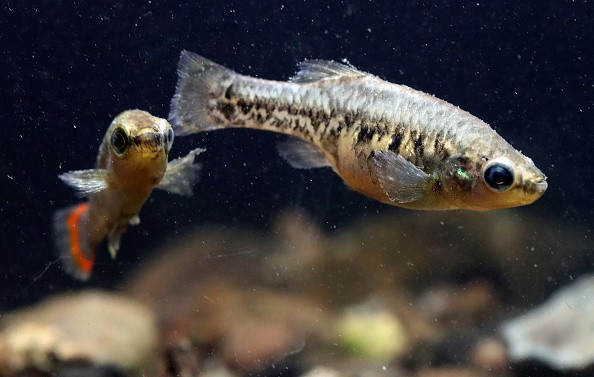The Arctic region is the most hastily warming part of the Earth. As a consequence, the marine environment across the North Pole, the Central Arctic Ocean (CAO), is in rapid transition from a permanently to a seasonally ice-blanketed ocean.
This implies a massive environmental change of Earth's northernmost surroundings, which includes deep intercontinental basins and submarine ridges overlaying an area of 3.3 million km.
Increasing accessibility to the CAO shortly is predicted to affect ecological and social dynamics, which includes the viable onset of industrial fisheries.
Fishes and other species thrive in Central Arctic Ocean
However, the lack of information on pelagic fish stocks below the ocean ice cover impedes any evaluation of the sustainability of potential future fisheries in the CAO.
Scientists participating in the international MOSAiC expedition with research icebreaker Polarstern have found fish and squid in deep water in the middle of the Arctic Ocean as single individuals of Atlantic cod and squid happen much farther north than already anticipated.
The results from Stockholm University, the Alfred Wegener Institute, and associates in the European Fisheries Inventory in the Central Arctic Ocean (EFICA) Consortium are published now in the scientific journal knowledge Advances, as per Phys.org.

Small fish come at really low abundances within the 200-600 m deep Atlantic water level of the Amundsen Basin as shown by the distinctive hydroacoustic dataset collected by the EFICA institute that appeared a" deep scattering level" (DSL) corresponding of zooplankton and fish on a 3170-kilometer long track of the MOSAiC travel.
According to Science, Some other commercial species inhabiting Arctic continental slope areas, such as Greenland halibut (Reinhardtius hippoglossoides) and beaked redfish (Sebastes mentella), are considered candidates for moving northward to the far-off central Arctic basins with farther climate change.
Though, the chance of fish reservoirs establishing themselves in the CAO depends on factors similar as food accessibility and possibilities for flourishing duplicate and reclamation of younglings.
Snailfishes (Liparidae), eelpouts (Zoarcidae), and other Fourteen fish species reported from the CAO are noncommercial species living in and on muddy bottoms. Concerning cephalopod nekton, only five individuals of the Borneo-Atlantic species arm hook squid (Gonatus fabricii) have so far been reported from shallower water above ridges in the CAO, but not from the deep basins.
An international agreement has been made against commercial fishing
The new paper in Science Advances is the primary clinical paper providing new discipline facts withinside the context of the agreement taking a precautionary approach, Canada, China, Greenland (Kingdom of Denmark), Iceland, Japan, Norway, Russia, South Korea, the U.S., and the European Union negotiated the Agreement to Prevent Unregulated High Seas Fisheries withinside the Central Arctic Ocean (CAO) that entered into pressure on 25 June 2021.
The ten companions of the Agreement will quickly be launching a massive Joint Scientific Research and Monitoring Program to gather new fish and environment facts withinside the Central Arctic Ocean.
The EU has already commenced the works through financing the EFICA Consortium's environment studies at the MOSAiC excursion (2019-2020), and the Synoptic Arctic Survey excursion with the Swedish icebreaker Oden (2021).
© 2025 NatureWorldNews.com All rights reserved. Do not reproduce without permission.





